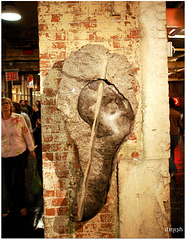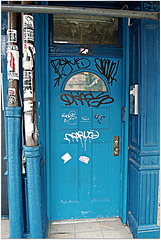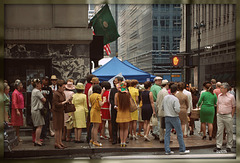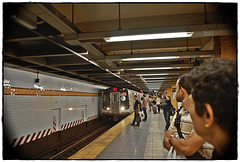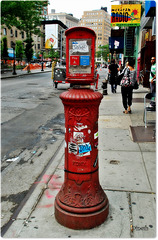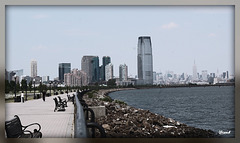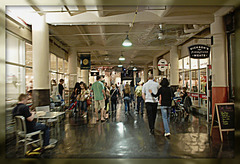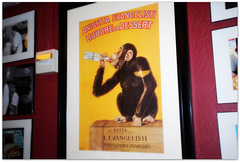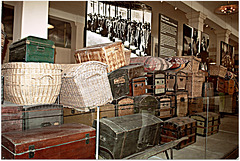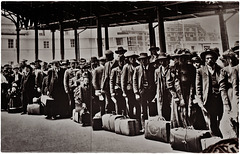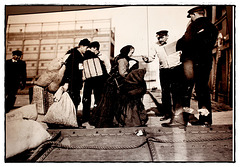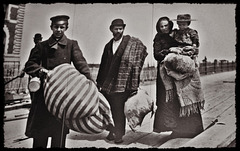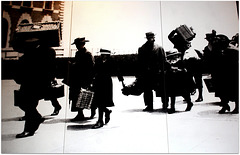
Visits
At Chalsea Market
Willy Nelson
At Chelsea Market
A Street scene
| |
|
Times SQ
| |
|
Door
| |
|
Men in Black (Supporting Actors)
| |
|
Men in Black III (2012)
Action | Comedy | Sci-Fi - 25 May 2012 (USA)
Director: Barry Sonnenfeld
Writers: Lowell Cunningham (comic), David Koepp (screenplay), and 3 more credits »
Stars: Will Smith, Tommy Lee Jones and Josh Brolin
Tube
| |
|
Fire / Police
Manhattan
| |
|
Chalsea Market
| |
|
Chalsea Market
Ontogeny Recapitulates Phylogeny
| |
|
|
|
Wall of Lombardy, New York
HWW and Best wishes
Regression was the idea that great trauma could cause you to regress to an earlier stage of development. It was an extension of the theory of recapitulation. This theory is best known for the phrase “Ontogeny recapitulates phylogeny,” put simply,m many scientists thought that as the fetus develops in the womb, it changes from a single cell organism into a protomammal, then transforms into a simple primate. Next it becomes a complex primate. Finally turns into a human. Of course, we now know this isn’t remotely true, but it was widely believed similarly Freud described regression as a sort of ‘Involution,” or “a return to earlier phases of sexual life.” ~ Page 210
Exhibits - Trunks
| |
|
| |
|
|
|
www2.scholastic.com/browse/subarticle.jsp?id=1673
The era known as the Gilded Age (1870s to 1890s) was a time of vigorous, exploitative individualism. Despite widespread suffering by industrial workers, southern sharecroppers, displaced American Indians, and other groups, a mood of optimism possessed the United States. The theories of the English biologist Charles Darwin-expounded in On the Origin of Species (1859)- concerning the natural selection of organisms best suited to survive in their environment began to influence American opinion. Some intellectuals in the United States applied the idea of the survival of the fittest to human societies ( Social Darwinism) and arrived at the belief that government aid to the unfortunate was wrong.
| |
|
www2.scholastic.com/browse/subarticle.jsp?id=1673
New Social Groupings: Immigrants, Urbanites, and Union Members. In 1890 the American people numbered 63 million, double the 1860 population. During these years the nation's cities underwent tremendous growth. Many new urbanites came from the American countryside, but many others came from abroad. From 1860 to 1890 more than 10 million immigrants arrived in the United States; from 1890 to 1920, 15 million more arrived. Most were concentrated in northern cities: by 1910, 75 percent of immigrants lived in urban areas, while less than 50 percent of native-born Americans did so. In the 1880s the so-called new immigration began: in addition to the Germans, Scandinavians, Irish, and others of the older immigrant groups, there came such peoples as Italians, Poles, Hungarians, Bohemians, Greeks, and Jews (from central and eastern Europe, especially Russia). Roman Catholics grew in number from 1.6 million in 1850 to 12 million in 1900, producing a renewed outburst of bitter anti-Catholic nativism in the 1880s. The large cities, with their saloons, theaters, dance halls, and immigrant slums, were feared by many native American Protestants, who lived primarily in small cities and the rural countryside.
Immigrants
| |
|
www2.scholastic.com/browse/subarticle.jsp?id=1673
New Social Groupings: Immigrants, Urbanites, and Union Members. In 1890 the American people numbered 63 million, double the 1860 population. During these years the nation's cities underwent tremendous growth. Many new urbanites came from the American countryside, but many others came from abroad. From 1860 to 1890 more than 10 million immigrants arrived in the United States; from 1890 to 1920, 15 million more arrived. Most were concentrated in northern cities: by 1910, 75 percent of immigrants lived in urban areas, while less than 50 percent of native-born Americans did so. In the 1880s the so-called new immigration began: in addition to the Germans, Scandinavians, Irish, and others of the older immigrant groups, there came such peoples as Italians, Poles, Hungarians, Bohemians, Greeks, and Jews (from central and eastern Europe, especially Russia). Roman Catholics grew in number from 1.6 million in 1850 to 12 million in 1900, producing a renewed outburst of bitter anti-Catholic nativism in the 1880s. The large cities, with their saloons, theaters, dance halls, and immigrant slums, were feared by many native American Protestants, who lived primarily in small cities and the rural countryside.
Immigrants
| |
|
www2.scholastic.com/browse/subarticle.jsp?id=1673
New Social Groupings: Immigrants, Urbanites, and Union Members. In 1890 the American people numbered 63 million, double the 1860 population. During these years the nation's cities underwent tremendous growth. Many new urbanites came from the American countryside, but many others came from abroad. From 1860 to 1890 more than 10 million immigrants arrived in the United States; from 1890 to 1920, 15 million more arrived. Most were concentrated in northern cities: by 1910, 75 percent of immigrants lived in urban areas, while less than 50 percent of native-born Americans did so. In the 1880s the so-called new immigration began: in addition to the Germans, Scandinavians, Irish, and others of the older immigrant groups, there came such peoples as Italians, Poles, Hungarians, Bohemians, Greeks, and Jews (from central and eastern Europe, especially Russia). Roman Catholics grew in number from 1.6 million in 1850 to 12 million in 1900, producing a renewed outburst of bitter anti-Catholic nativism in the 1880s. The large cities, with their saloons, theaters, dance halls, and immigrant slums, were feared by many native American Protestants, who lived primarily in small cities and the rural countryside.
Jump to top
RSS feed- Latest items - Subscribe to the latest items added to this album
- ipernity © 2007-2024
- Help & Contact
|
Club news
|
About ipernity
|
History |
ipernity Club & Prices |
Guide of good conduct
Donate | Group guidelines | Privacy policy | Terms of use | Statutes | In memoria -
Facebook
Twitter



